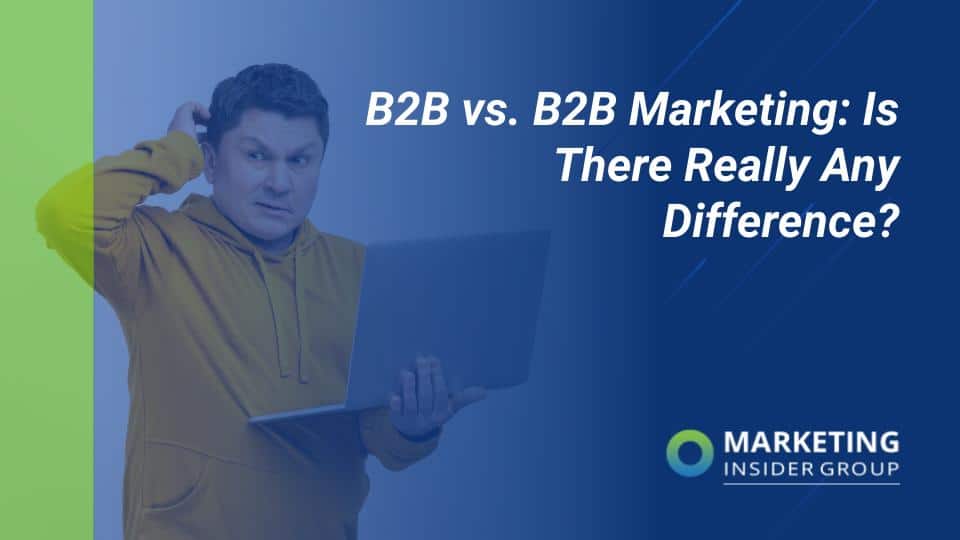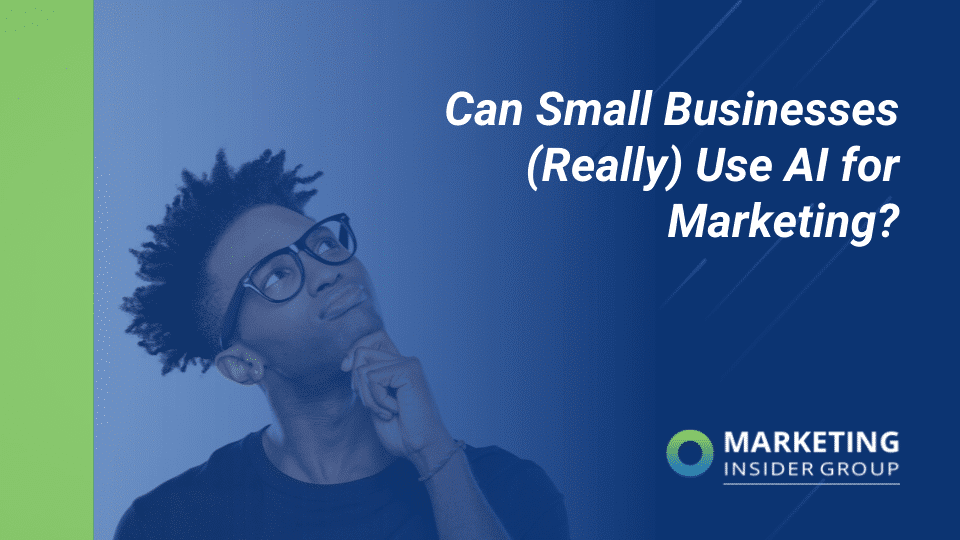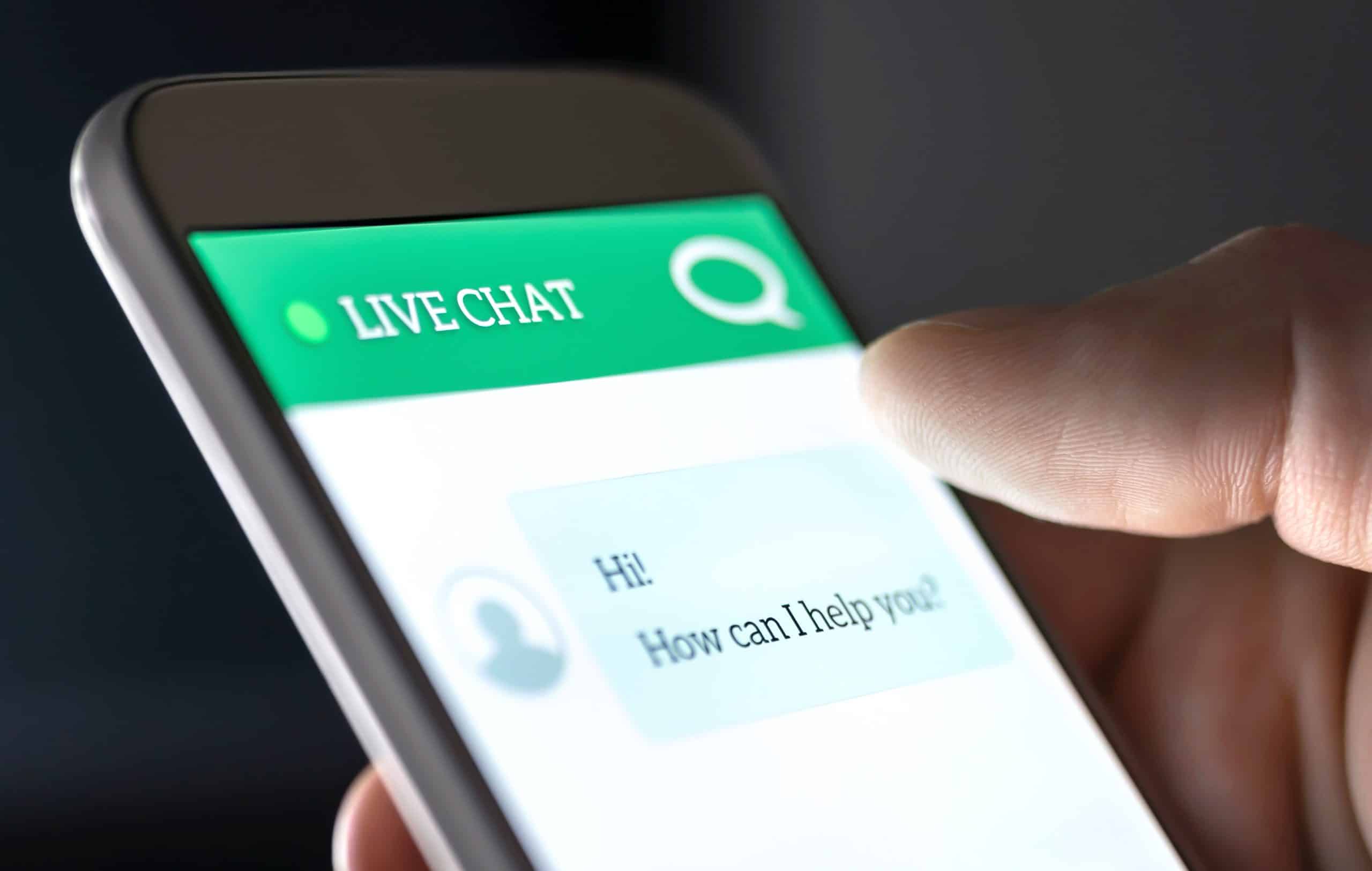
Do Chatbots Really Work for Customer Acquisition?
If you interact with brands or organizations on Facebook, there’s a good chance you’ve come across a chatbot for customer acquisition at least once:
You comment on a page’s Facebook post. A few hours later, a message bubble appears. The page messaged you with a question.
It might feel strange at first – you know it’s a bot on the other side of the “screen” – but you kind of like this idea. You can learn more about the brand and ask questions without any implied pressure from a sales agent.
Three years ago, Facebook reported that over 300,000 active Messenger bots had exchanged over 8 billion messages with users. A year later, Facebook revealed that businesses and users share 20 billion messages each month.
But chatbots for customer acquisition are bigger than Facebook.
You can incorporate chatbots into strategic touchpoints like your website, landing pages, apps, text platforms, and more. It’s not as complicated as you might think either.
Quick takeaways:
- Chatbots can encourage and accelerate customer acquisition by engaging with users when they’d rather not speak to someone on your team.
- You can seamlessly automate re-engagement and scale conversations while the chatbot continuously improves.
- Effective customer acquisition chatbots must offer something useful and non-transactional. Users should immediately see value.
How Do Chatbots Work for Customer Acquisition?
Chatbots use AI and machine learning to engage users by answering questions, asking questions, and prompting conversations. You can create a chatbot for any high-level objective – like customer acquisition.
A customer acquisition chatbot guides users through conversations that end with the user taking action. Ideally, that action would involve making a sale but not every user will be ready to buy.
That’s why an effective acquisition chatbot should personalize the CTA based on the interaction – and offer multiple choices:
- Requesting a quote and supplying relevant info
- Scheduling a consultation or meeting
- Reading or downloading an exclusive piece of content
- Choosing from personalized product recommendations
What are the Limits of Chatbots for Customer Acquisition?
Remember, chatbots are nothing more than code, text prompts, and algorithms.
A single chatbot for acquisition, shipping questions, and customer service would be a huge undertaking in terms of text prompts and testing.
You want to stick with one main objective for each chatbot you create:
- Customer acquisition
- Lead generation
- Shopping and transactions
- Frequently asked questions
- Assistance and customer service
Chatbots are only as good as the data, text prompts, and testing you put into them. They offer tons of potential for acquisition but you have to be ready to put in the work to get them right. That’s the nature of machine learning.
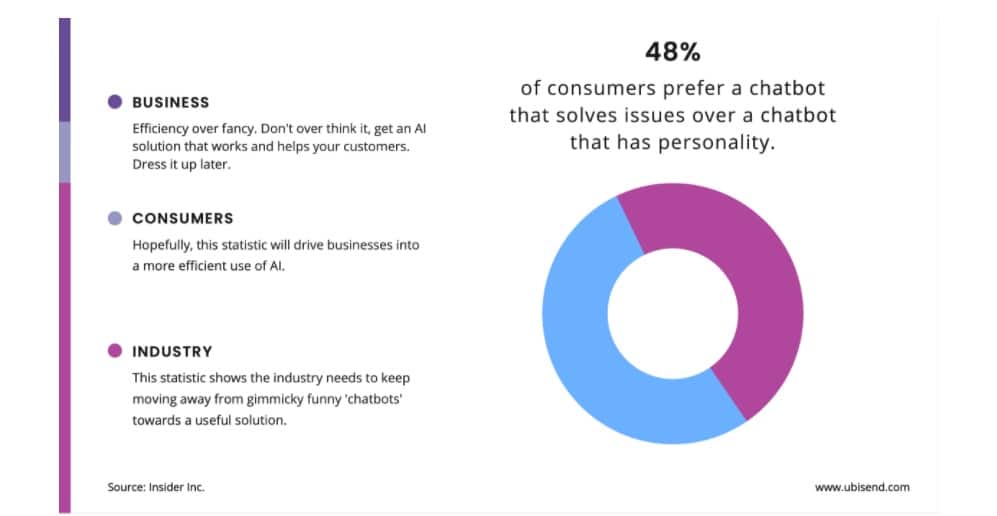
9 Benefits of Using Chatbots for Customer Acquisition
Chatbots require some time to set up and test but the benefits are well worth the effort.
You can engage potential customers who might never initiate contact with your company under other circumstances. Plus, chatbots offer personalized solutions and they’re always on.
And those are just a few of the benefits.
1. Chatbots are a Cost-Effective Customer Acquisition Tool
According to research, banking operational savings attributed to chatbots will grow to 3,150% between 2019 and 2023.
Businesses in every industry can use chatbots to streamline interactions and boost acquisition for a fraction of the operational costs. Custom add-ons for insurance packages, credit card applications, personalized software configurations – set up your chatbot to offer anything you like.
Effective chatbots are incredibly cost-effective compared to the alternatives. Overall, chatbots can cut operational costs by 30%. But what do chatbots cost? It depends.
Facebook makes it easy to design a custom Messenger chatbot for customer acquisition with minimal coding knowledge. Enterprise companies, however, can spend several thousand developing and testing a sophisticated chatbot.
2. People Like Using Chatbots for Certain Tasks
67% of consumers around the world use chatbots every year. Most appreciate the instant answers from chatbots in urgent situations. Others like using chatbots to:
- Make reservations
- Resolve complaints
- Get product ideas
- Buy simple items
- Pay bills
- Find human agents
Human agents will never become obsolete. People still prefer reaching out to humans in certain situations. Chatbots, however, can fill the gap when humans aren’t available or customers would simply rather use an automated system.
Acceptance for chatbots will grow too as they improve and people get familiar with them. Just make sure your chatbots include a CTA for contacting an agent.
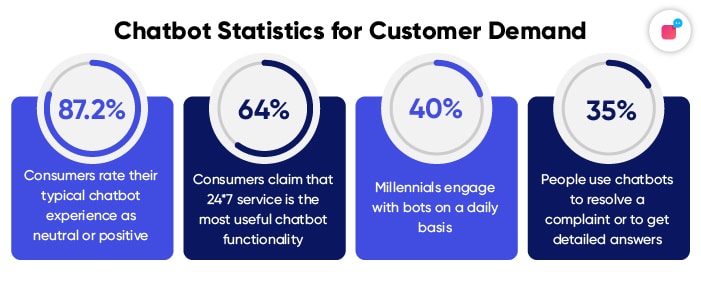
3. Chatbots Automate Re-Engagement
Follow-ups are a breeze with chatbots. Just tell the chatbot when to reach out after an interaction ends and what to say.
Depending on the context, your chatbot could send a Facebook message, WhatsApp message, email, push notification, or text message prompting users to:
- Complete an application
- Finish their purchase
- Schedule a meeting
- Remember their appointment
- Answer additional questions
Choose an optimal time after the initial interaction and automate the rest. Your team won’t have to worry about setting reminders, waiting for replies, or figuring out what to say.
4. You Can Collect Valuable Information on Customers
Chatbots for customer acquisition should ask important questions to personalize their responses and solutions.
The answers to those questions are invaluable when you consider these potential customers may never have contacted you otherwise. Even if users don’t convert into customers, you can still use the information to hone your target audience.
What kind of information? Whatever you think would help customize the experience such as:
- Company size and goals for quotes
- Verticals and pain points
- Solutions they’ve already tried
- Preferred types of content
- Ideal way to contact them
Using data on verticals and pain points, you might even uncover new market segments for future products.
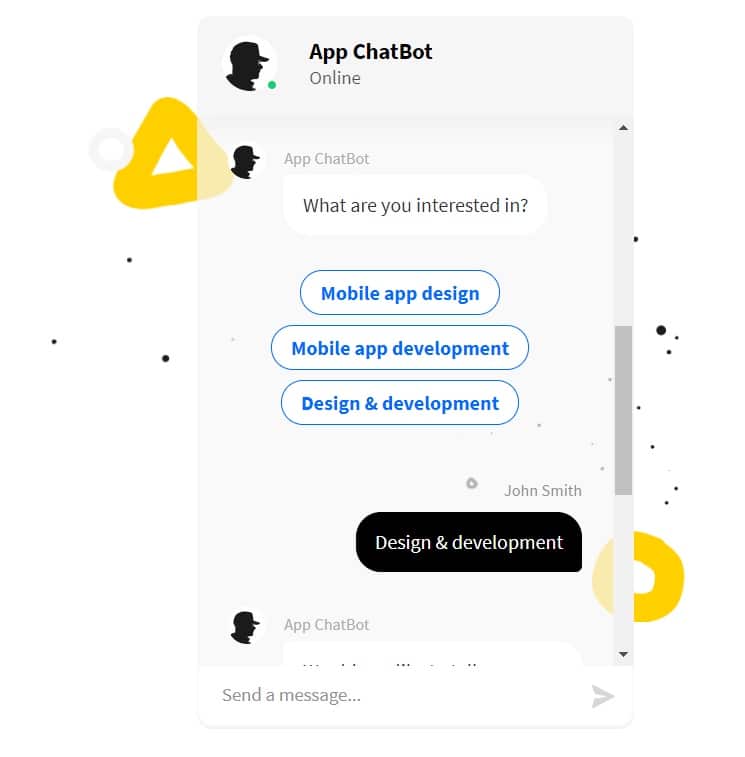
5. Chatbots Can Integrate with Other Acquisition Tools
Most chatbots should offer metrics and analytics from interactions within the platform. That alone is valuable for learning about your audience.
However, you can also integrate your chatbot for customer acquisition with all kinds of marketing and sales tools: WhatsApp or SMS, CRM, Facebook, Salesforce, etc.
Integrate your customer acquisition chatbot with Google Analytics and WordPress to aggregate data and build a comprehensive picture of your buyer’s journey.
6. Your Brand Can Be Available 24/7 in Any Language
64% of people say what they like most about chatbots is the 24-hour service. It’s definitely a huge bonus.
Typical nine-to-five schedules are growing rarer by the day – especially with remote work growing post-COVID. Customers appreciate it when they don’t have to bend their schedule around business hours.
Not only that but chatbots for customer acquisition also let you engage users in any language you please. There’s no need to keep translators or fluent agents on-staff. Just scale your team as your customers grow in different markets.
7. Chatbots Automatically Scale Each Interaction
90% of consumers say they’re willing to share behavioral data with companies if it means they’ll receive personalized recommendations in return.
Your business buyers are also consumers when they’re not in the office. It’s smart to assume they have similar expectations for personalized experiences.
That’s why chatbots are so useful for customer acquisition: They’re intuitive. Users engage with the chatbot by answering questions or supplying data. The chatbot adjusts its responses and settles on the best solution for each user based on their answers.
By automatically scaling mid-conversation, chatbots can also judge a user’s stage of the funnel. The message is always relevant.
8. You Can Promote Content Through a Chatbot
Not every interaction with a customer acquisition chatbot has to end in a sale. Sometimes that’s just not where a user is at yet. Why force a sale CTA onto them when something else would make a better impression?
Content offers a nice alternative.
If a user isn’t ready to receive a quote, book a meeting, or complete a purchase, just end the conversation with content that will nudge them along like:
- An eBook on how to pick the best solution
- A guide on custom configurations
- Relevant case studies for their industry
- Free trials or automated demos
A few days later, you can follow up with the user to ask them if they had a chance to check out the content and ask their thoughts – all through the chatbot’s automated re-engagement.
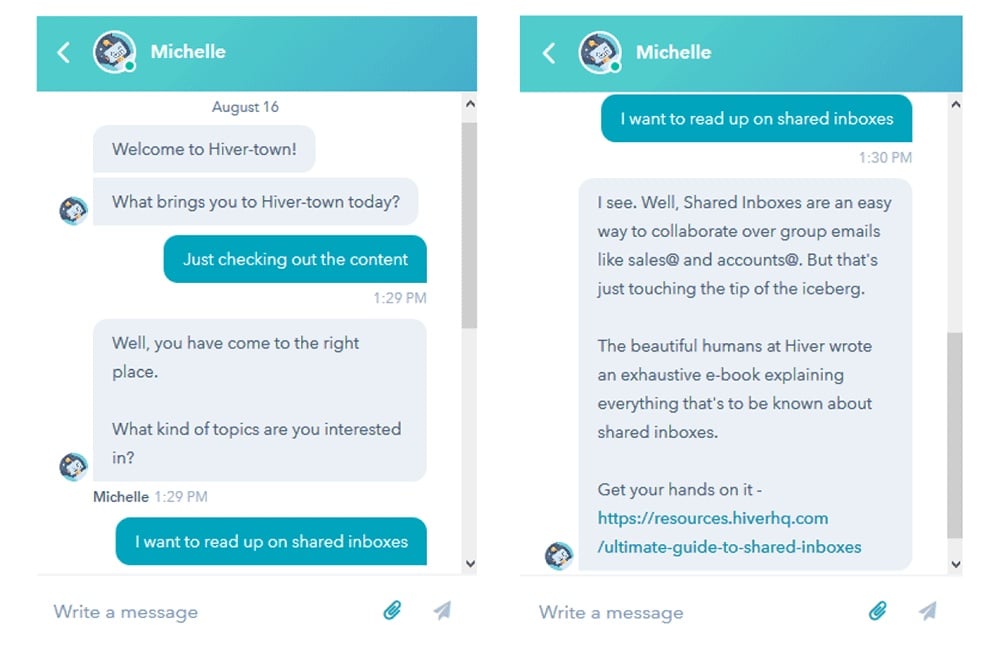
9. Chatbots Accelerate Customer Acquisition
Seamless scaling, personalized solutions, gentle follow-ups, automation, instant replies any time of day – together, all the benefits of chatbots accelerate customer acquisition.
Your brand has more opportunities to interact with potential customers on their own terms and each interaction is completely optimized.
Even those who don’t convert will exit the chatbot with a better understanding of what you offer.
How to Build an Effective Chatbot for Customer Acquisition
Remember why people use chatbots in the first place.
They want straightforward answers, personalized solutions, and low-pressure interactions.
An effective chatbot for customer acquisition should “read the room” in that way. It should be a win-win for both your brand and customers.
Decide What Value Your Chatbot Will Provide
Most people will happily provide some information if they know it means receiving personalized solutions in return.
The keyword in that sentence is “if:” Your customer acquisition chatbot has to supply some kind of value to the user. Otherwise, why would anyone bother talking to a machine?
Context matters too. Your website’s acquisition chatbot should supply more value than someone can get from reading a page on your website too. Meanwhile, a Facebook Messenger chatbot might offer solutions that include visiting a service page on your website.
Think about how you can translate value into chatbot form. Some choices include:
- Personalized solutions for a specific pain point
- Industry skills or tips to learn
- Common myths about your industry
- Gamified learning or content
- Exclusive content or reports
Set Your Main CTAs for the Chatbot
Once you have a few ideas as to the type of value you can supply with a chatbot, you’ll need to figure out how to align some of them with your goals so you can craft CTAs.
Since this is a chatbot for customer acquisition, users will convert into customers under an ideal interaction scenario. Your CTAs for that could include:
- Scheduling a meeting
- Requesting a quote
- Custom configurations and packages
- Personalized product or service suggestions
Pick a main goal and build additional CTAs out from there that relate to different stages of the funnel.
You want to end the chatbot interaction on a positive note with potential to follow up. That’s why it’s important to offer a range of CTAs to meet users where they’re at.
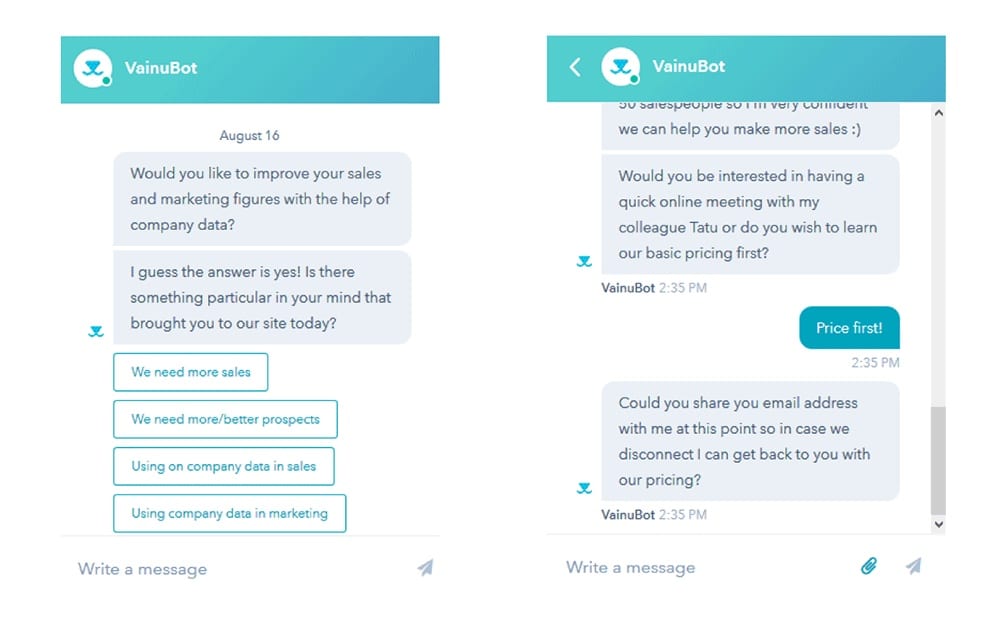
Build Your Chatbot User Profiles
Chatbots offer a one-on-one interaction so a deep understanding of your audience is a key piece of the puzzle.
Without comprehensive profiles for the different types of chatbot users, the interaction won’t quite land. No one wants to interact with a chatbot that spits out irrelevant solutions or recommendations. It feels insulting.
Work out your chatbot users with some basics:
- Potential firmographics
- Knowledge of your company
- Pain points they’re trying to solve
- Solutions they’ve already tried
- Knowledge of your industry
- Thought leaders they trust
- Preferred content formats and topics
Choose Your Chatbot’s Voice and Personality
Your chatbot for customer acquisition should feel like a single entity. People will know it’s a bot but you should still try to make it feel as human as possible. Talking to an obvious bot feels unsettling.
Write a character for your chatbot. Work in your brand’s message, voice, and culture. Write a life’s story and give them a name.
You won’t use more than half of this. In fact, your interactions should be super concise and straightforward. But giving your bot a human background will help you write those short text prompts in character.
Develop Your Chatbot’s Code and Software
Once you prepare the goals and strategy for your chatbot, it’s time to bring it to life.
Look for a developer with experience in your industry. They’ll have a better idea of what platforms, integrations, and analytics you’ll need to incorporate.
Make sure to ask about software for integrating chatbot data with your website, apps, and social media platforms for an omnichannel experience. 70% of customers say they expect a seamless handoff between devices or platforms.
Try Facebook’s chatbot developer if you’re up to it:
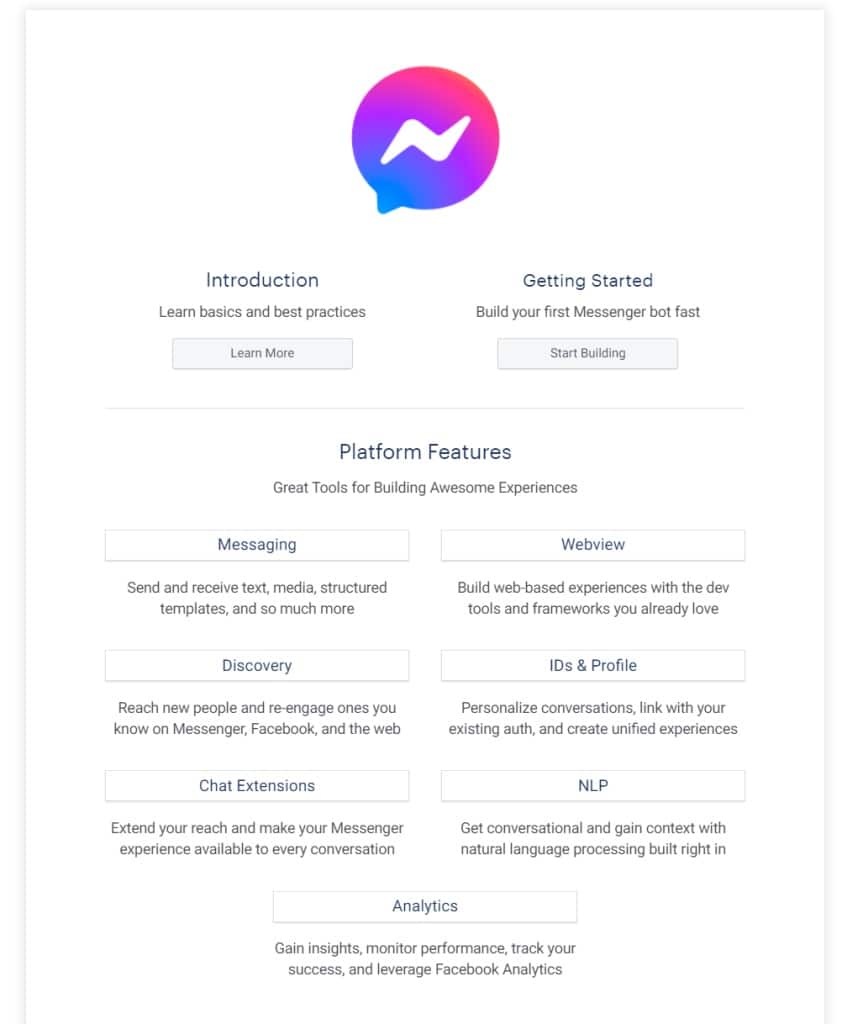
Keep Conversations Gentle and Thoughtful
With chatbots, it’s especially important to respect the social contract.
Many users might choose your chatbot as a low-pressure way to learn about your brand. Don’t violate their trust by using their contact info to hound them with texts, emails, and phone calls later.
Follow-up notifications should be gentle and thoughtful. Consider where each user’s at with their pain points and how you fit in. Use that info to help them with relevant ideas – not force sales on them.
Are Chatbots Really Effective for Customer Acquisition?
Absolutely. Chatbots as a concept and technology can be incredibly effective for boosting customer acquisition at a lower cost with less effort than other strategies.
People respond well to well-made chatbots. Most of us actively avoid reaching out to brands via phone, email, or live chat for basic answers because we don’t want to deal with the follow-ups that might come later.
Chatbots give you a low-pressure touchpoint to accelerate acquisition.
Brands just need to put in the work of building a useful and engaging chatbot from the user’s perspective while respecting the social contract.
Could your content use a little extra personalization to reach visitors at every stage and touchpoint? Check our custom Content Builder packages to see how we’ve helped brands realize 7x ROI with relevant content.


